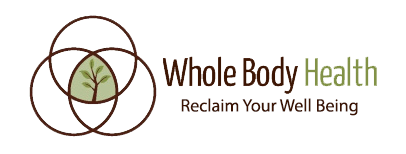Whole body health
Did you know that attaining and maintaining good health is nearly impossible without good posture?
Almost everyone would agree that good posture looks better than slouching and slumping posture. Not only does slouching posture look bad, but the long-term effects from continually slouching while standing, sitting on your laptop/smart phone, etc. has significant negative effects on your health.
Check out this list of the many negative effects poor posture may be having on your health:
Spinal Curve
An upright spine isn’t actually straight. There are three important spinal curves: one in your neck, one in your upper-to-mid-back, and one in your lower back. Poor posture distorts these curves, such as when your head juts forward, straightening out the curve in your neck. These changes to your spine’s natural curves affect the entire body.
Breathing problems and Fatigue
Poor posture restricts your diaphragm and your rib cage movement. Theses restrictions reduce lung capacity and leads to shallow or labored breathing and fatigue/lack of energy, which can reduce your overall productivity and often contributes to feelings of anxiousness. Ultimately, this means that bad posture reduces the oxygen that gets to your brain, organs, muscles, and other tissues.
Digestion
A slouching posture often compresses the space in the abdomen. This compression can squeeze the internal organs and impair digestion. For the most efficient digestion, your stomach and intestines need enough room to work. Correcting your posture helps your body digest and process food efficiently.
Cardiovascular Health
The same pressure that slouching posture puts on your digestive system also squeezes your heart, diaphragm, and lungs. Poor posture impairs circulation, which makes it harder for your heart to do its important work. Research has shown that the posture people use when they spend time on a smartphone reduces respiratory function.
Headaches and Migraines
Poor posture regularly strains the muscles at the back of your head, neck, upper back, and jaw. This can put pressure on nearby nerves and trigger, what are known as, tension-type or muscle-spasm headaches.
Knee, hip, and foot pain
Muscle weakness, imbalances, and tightness/lack of flexibility creates misalignment, trigger points, and poor movement in the joints of the foot, knees, and hips. The dysfunctional movements that result can cause trigger points in the muscles, adhesion in the fascia, and pain in these joints.
Jaw pain
A forward head and shoulder posture may strain the muscles under your chin and cause your temporomandibular joint (TMJ) to become overworked. Jaw tension and pain often accompanies the diaphragm restriction and shallow breathing associated with poor posture and stress. All of these patterns can easily result in pain, fatigue, and popping in your jaw, decrease in jaw movement, as well as headaches and neck pain.
Low Back Pain
Although low back pain can result from injuries resulting in arthritis and disc herniations, changing your spine’s natural curves can absolutely cause back pain. This type of pain is common due to the increase of time spent sitting while using the computer/electronic devices and sitting in a slouched/relaxed posture. Relaxed sitting (sitting on your tailbone instead of the “SITS” bones) will set up a cascade of compensation patterns that will increase tension and pressure in the low back and pelvis. In addition, weakness in the pelvic floor from prolonged sitting over years increases the risk of back injury while being more active (i.e. lifting, bending, participating in sports, etc).
Mood
Research shows a close connection between posture and emotions. People who are depressed tend to slouch. Not only does mood affect posture, amazingly, posture seems to affect people’s emotions as well. Good posture eases the symptoms of depression and helps people feel better after difficult events. Quality posture helps people feel less fatigued and have more positive emotions. When you consider all the information that is constantly being exchanged between the brain and the body through the spine, it makes sense that a healthy spine and posture can make you feel better overall.
Neck and Upper Back Pain
This type of pain is becoming more and more common with the increase of time spent in the “vulture pose” while using the computer or other electronic devices. In the past, this back pain was primarily in adults but it is becoming more prevalent in teenagers as they become more attached to their devices at a younger age. Pain and tightness/stiffness in the neck and upper back can be due to injury and other conditions, such as arthritis and herniated disks, but poor posture is often one of the most likely contributors to this list of degenerative conditions. Neck and upper back pain is a frequently tolerated nuisance that can quickly become acute with prolonged poor sitting, sleeping, or standing postures and if it becomes chronic, can significantly reduce the quality of your life.
Improving your posture can help prevent or reverse many of these conditions. As you begin to mindfully focus on improving your posture, you’ll be amazed to see how your quality of life can improve — simply by standing and sitting a little straighter.
